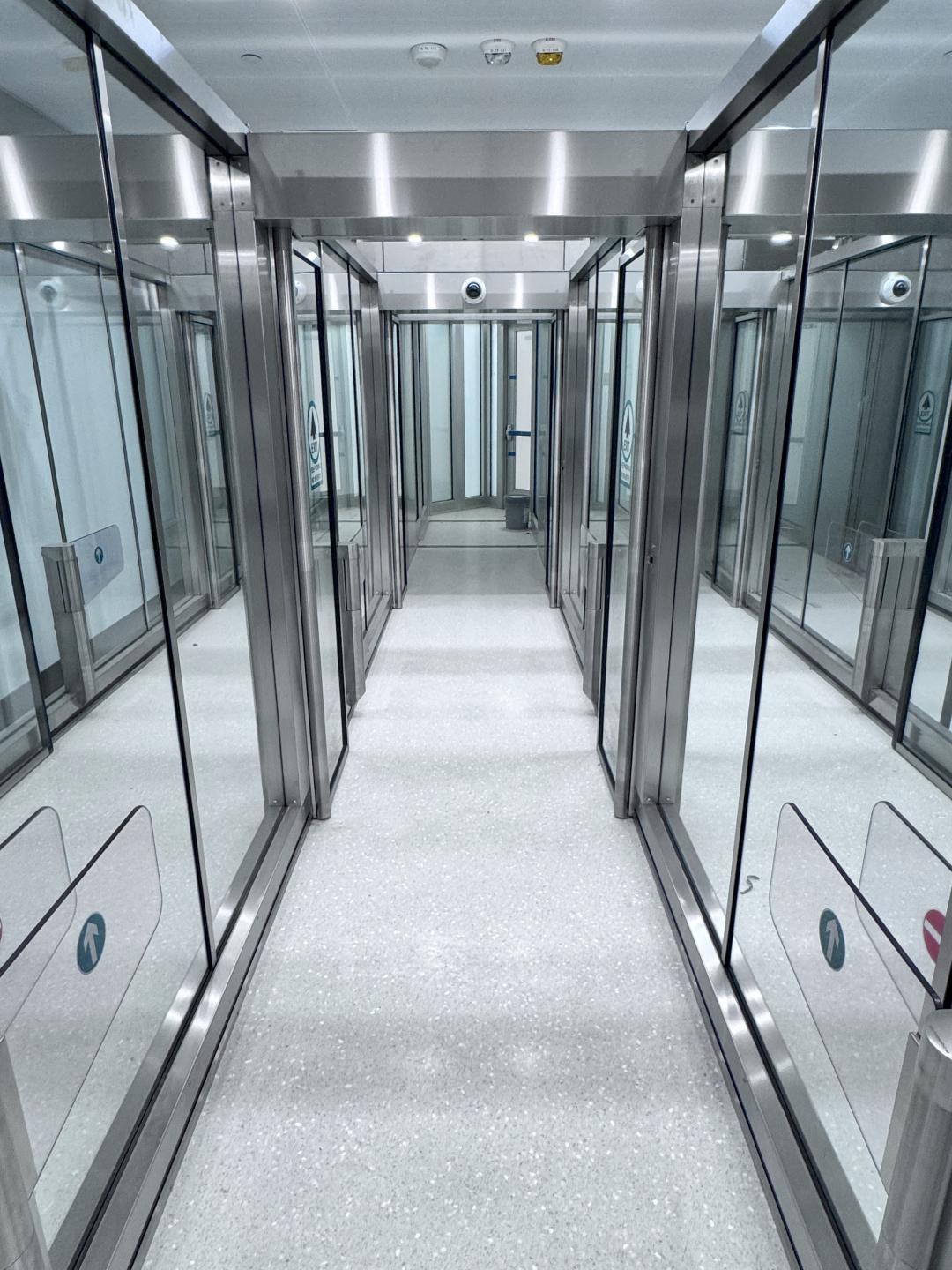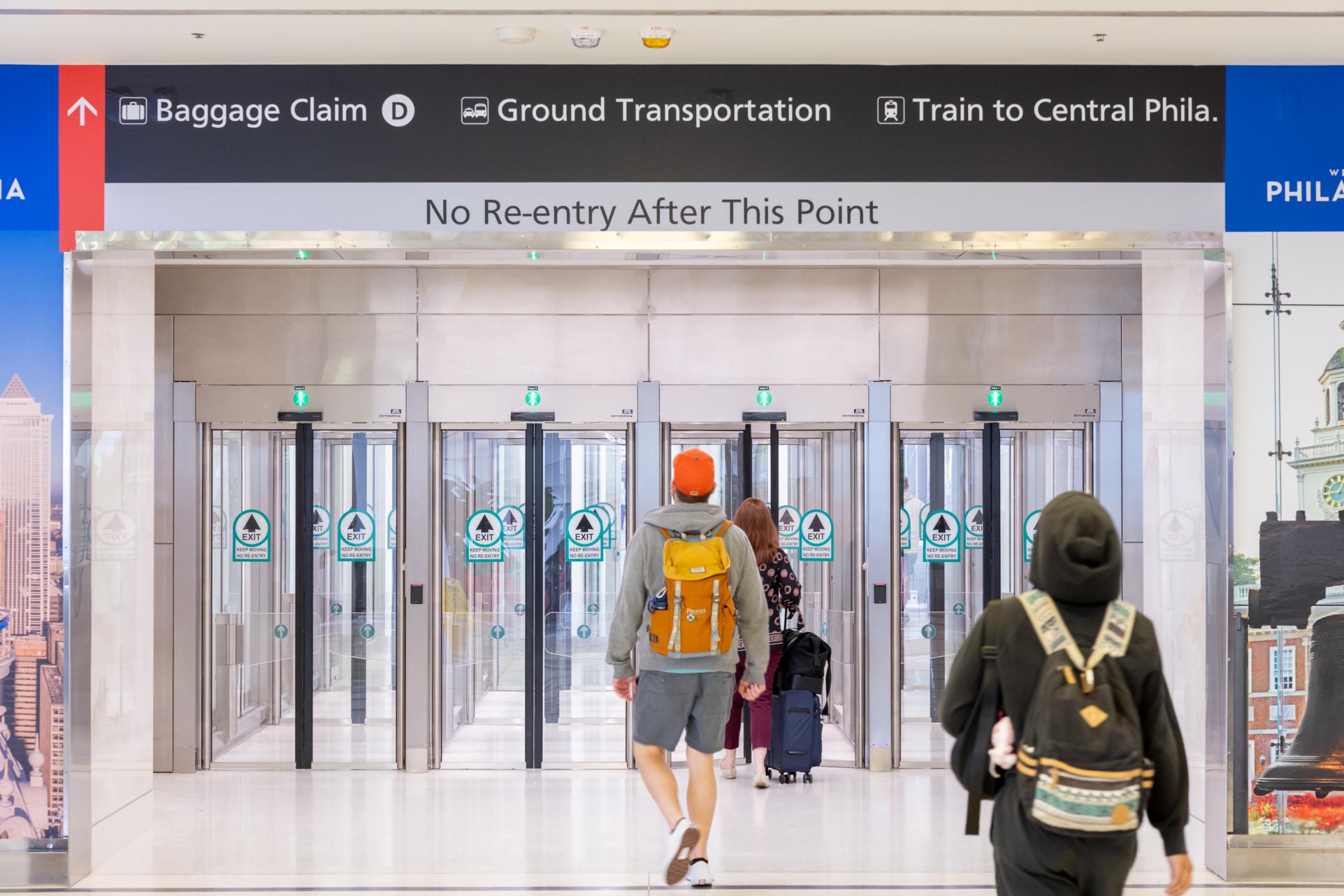On August 6, Philadelphia International Airport (PHL) opened a new exit lane system at Terminal D, the first in the airport’s upgraded unmanned exit lane system project. The project received a $600,000 grant from the Department of Community and Economic Development.
PHL began its work on improving terminal security and operational efficiency by conducting a detailed study of all exit lanes throughout its terminals. Based on the results, the airport launched a multi-phase approach to modernize exit doors across the airport. The Unmanned Exit Lane project involves structural modifications, physical dimension changes, system improvements, replacements of the existing exit gates, and providing new secure exit lane system. These improvements support a secure exit process even when TSA officers are not present. The technology monitors unauthorized access attempts and is designed to automatically secure access points, detect breaches, and initiate lockdown protocols.
“This project is one of the major upgrades we're implementing as we prepare for the 2026 events,” says Chief Capital Development Officer Api Appulingam. “As part of our $500 million capital program, these high-tech doors will create a smoother, more welcoming experience for our guests as they exit the terminals and begin their Philadelphia journey”.
State-of-the-art security
The upgrade includes the installation of four new Dormakaba unmanned exit lanes. The new system is fully integrated with the airport’s access control and surveillance systems. Dormakaba provides a state-of-the-art, modular three-part secure glass corridor system with multiple doors. The corridor system guides passengers safely and efficiently from the secure gate area to non-secured areas for baggage claim and airport exits.
The system is equipped with a combination of cameras, motion detectors, presence sensors, and video analytics to detect wrong way movement and items left behind while also preventing unauthorized re-entry. As a passenger approaches the corridor, occupancy sensors detect their presence and operate the doors by opening the exit doors ahead and securely closing the ones behind ensuring doors open sequentially while preventing backflow or unauthorized re-entry. The system allows Airport Access Control to remotely monitor the corridors, reset alarms and door functions.
A more welcoming and smoother exit
PHL also added additional features, such as angled extensions and opaque glass at the last exit door to break the line of sight. This helps the passengers from the non-secured side find the right way in. As an added benefit, the upgrade also allowed the airport to reclaim valuable terminal space previously used for previous exit walkways and to install inviting murals featuring Philly landmarks to welcome passengers as they exit the terminals.

Efficient construction management with fewer disruptions to passengers
"This project had a unique challenge of building new exit lanes in place while allowing PHL passengers to continue to exit without detouring them to other terminals,” said AKT Solutions Design & Construction Senior Project Manager Kalpesh Trivedi. “The project team worked very closely with the Security & Operation teams and coordinated a phased approach to install the new state of art exit lanes with minimal impact to PHL passengers."
Terminals D and E were selected for Phase 1 of the Unmanned Exit Lane Program with an estimated budget of $8 million. Terminal D was the first to be completed and is now fully operational. Construction in Terminal E is ongoing and on track for completion by December 2025. Terminal F will be upgraded in Phase 2 of the program. Remaining terminals will be addressed in the following phases of the program.
The participating project teams included:
- PHL/CDG Project Manager: Kalpesh Trivedi - AKT Solutions LLC
- Designer: HOK Architects
- General Contactor: Daniel J. Keating Company
- Electrical Contractor: Armour & Sons Electric, Inc.
- Exit lane System: Dormakaba






